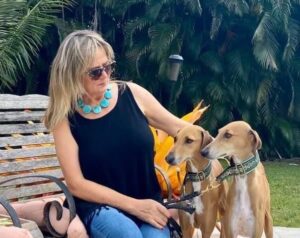
Lilia Berezkina | Ayur-es-Sahel Azawakh
Lilia Berezkina is the breeder behind Ayur-es-Sahel Azawakh. Read about the kennel’s beginnings, the sires, the dams, the puppies, and more!
Home » Dog Breeds » Azawakh Dog Breed
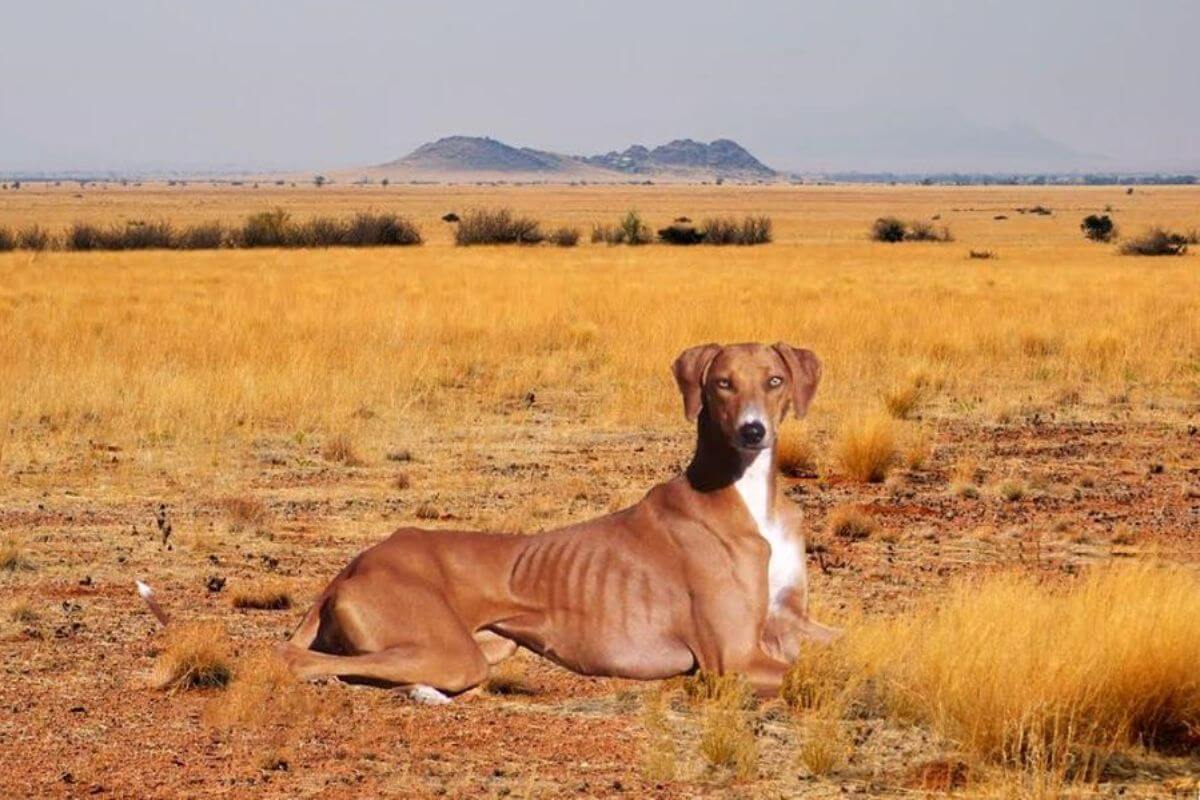
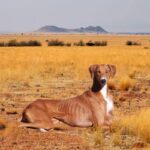
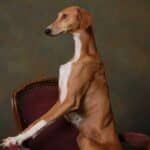
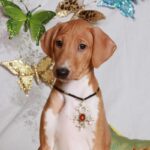
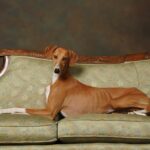

The Azawakh is an ancient and noble sighthound originating in the Sahel region of Northern Africa. Valued for its uncommon loyalty and unusual elegance, as well as its keen hunting abilities, this unique purebred has traditionally been used by the nomadic Tuareg people to hunt game and guard encampments. With its tall, slender physique and regal nature, the Azawakh not only excels in its functional roles as a hunting and guarding dog, it also exudes an uncommon aura of dignity and reserve.
Hound
23,5 – 29 Inches
33 – 55 Pounds
12 – 15 Years
| Country of Origin | Burkina Faso, Mali, Niger |
|---|---|
| Bred For | Hunting, Guarding |
| Known For | Great Fineness, Vertical Proportions, Floating Gait |
| Popularity | Low |
| Temperament | Quick, Attentive, Distant |
| Activities | Hunting, Running, Guarding, Conformation Shows, Dog Sports |
The story of the Azawakh begins in the unforgiving landscape of North Africa, particularly within the Sahel regions of Mali, Niger, and Burkina Faso. As the companion of the nomadic Tuareg people, this tall and lanky sighthound served as both hunter and protector, and even became a symbol of prestige.
The name “Azawakh” is derived from the Azawagh Valley. Historically, the breed was prized for its hunting abilities, especially in pursuit of fast-moving game such as hare and gazelle. The hounds’ exceptional agility and speed made the dogs perfect for the task, and their keen senses proved invaluable in the sparse terrain of their homelands.
Beyond hunting, the bond between the Azawakh and the Tuareg was deeply intimate. The hounds weren’t merely tools but also cherished family members. They shared the tents with their human counterparts, providing warmth on cold nights, and they stood as vigilant guards, ever watchful for unseen threats.
It wasn’t until the 1970s that the Azawakh made its way outside of Africa. The hound’s elegance and unique appearance quickly garnered attention from dog enthusiasts in France and Yugoslavia, and efforts soon began to promote the throughout Europe. The first Azawakhs were welcomed to the United States in 1987.
In terms of official recognition, the Fédération Cynologique Internationale (FCI) first acknowledged the Azawakh in 1981. The Royal Kennel Club (UK) followed in the early 2000s, and the American Kennel Club (AKC) granted full recognition to the breed in 2019.
Adult male Azawakhs typically stand between 25 and 29 inches tall at the shoulder, while mature females usually range from 23 to 27 inches in height.
Males generally weigh between 44 and 55 pounds, while females weigh slightly less, usually from 33 to 44 pounds.
The Azawakh is defined by specific proportions that underscore its decidedly unique frame. The length of the body, compared to the height at the withers, follows a 9:10 ratio. It’s worth noting that this ratio may be slightly higher in females. The breed’s light bone structure and lean musculature, coupled with its deep chest, are designed for swift, enduring pursuits in a harsh desert environment. The Azawakh’s bones are refined but strong, enhancing this sighthound’s affinity for both speed and endurance.
Texture: The Azawakh’s coat is short and fine, fitting tightly over the entire body. This sleek covering provides unequalled protection against the intense heat of its desert environment while also allowing for efficient cooling. A harsh texture or semi-long coat is therefore unacceptable.
| Standard Color | |
|---|---|
| Fawn | ee |
| Red | ee |
| Brindle | ee |
| Sandy | ee |
| White | ee |
| Black | ee |
| Blue | ee |
| Brown | ee |
| Gray | ee |
| Cream | ee |
| Standard Marking | |
|---|---|
| White Markings | ee |
| Black Mask | ee |
| Piebald | ee |
| Brindle Markings | ee |
| Grizzle Markings | ee |
| Parti-Color | ee |
A Note About Color: Color is immaterial according to the AKC Standard; however, the FCI Standard allows only fawn, with or without brindling, and/or white patching that is limited to the extremities. White hairs may be present on the forechest, base of the neck and nape of the neck as a small spot, and as stockings on all four legs from the feet to the elbows and thighs. A white blaze is not desired, but a black mask may appear on a brindle-colored Azawakh.
The Azawakh’s tail is another distinctive breed feature. Set low, the tail is slender and tapered, extending to the hock joint. In its natural state, it hangs with a slight upward curve towards the end, resembling a sickle shape. When the Azawakh is in motion or alert, the tail may rise but does not curl over the back. It is sparsely covered with short, fine hair, becoming only slightly bushier towards the tip.
Owning an Azawakh is a commitment to understanding and appreciating the unique qualities of this breed. While these hounds are revered for their elegance and grace, there’s more to the breed than meets the eye. This hound requires a special kind of understanding and care.
Lifespan: The Azawakh typically lives from 12 to 15 years. With proper care and a healthy lifestyle, these hounds can happily lead fulfilling and active lives well into their senior years.
While the Azawakh is typically a healthy and resilient dog, like all breeds and mixed breeds, there are some health risks that owners should keep in mind:
Regular veterinary check-ups are invaluable for the early detection and management of potential health issues. Working closely with both the dog’s breeder and a vet will ensure that the Azawakh receives preventative care.
Azawakhs are intelligent and independent thinkers. The breed’s independence, however, can pose a challenge for novice dog owners. These hounds have a penchant for forming strong bonds with their families, often becoming incredibly protective. This protective streak extends to an innate wariness of strangers. An Azawakh can display a reserved demeanor around unfamiliar faces, so early and consistent socialization is paramount to help these dogs become more at ease in a variety of social situations. Their intelligence demands consistent training and a handler who comprehends the breed’s deeply sensitive nature. The breed’s need for companionship is strong, and these dogs thrive best when they’re involved in regular family activities. Although they generally get along well with other dogs they’ve been raised with, their pronounced prey drive can entice them to chase after smaller pets.
The Azawakh’s lean and athletic build necessitates a diet that can provide all the essential nutrients without contributing to unnecessary weight gain. It’s essential to provide puppies with a diet specifically formulated for large breeds. Because they grow rapidly, Azawakh pups require food that supports their bone and muscle development. As they transition to adulthood, they need a balanced diet that caters to individual energy levels. Depending on an Azawakh’s weight, activity level, and age, the adult might consume between 2 and 3 cups of food daily. However, this can vary, and it’s always best to consult with the dog’s breeder and a veterinarian to determine the ideal amount. It’s also worth noting that Azawakhs can have a fast metabolism. This means they can burn through calories quite rapidly, so it’s important to monitor their overall condition regularly and adjust their food intake accordingly. And, in addition to providing regular meals, fresh drinking water should always be made available.
Training an Azawakh can be a challenging experience. These hounds are independent and intelligent, with an almost cat-like demeanor. This means that while they can pick up commands and cues quickly, they may choose to follow them on their own terms. Positive reinforcement, patience, and consistency are key, and harsh training methods are not recommended as they can damage the bond between dog and handler. Since Azawakhs have a strong prey drive and can be quite vocal, early training is needed to help moderate any tendency to bark excessively or give chase after smaller animals. Proper socialization and exposure to various people and different environments can help to ensure that the observant and mischievous Azawakh is a good neighbor as well as a loyal companion.
As a sighthound, the Azawakh has a need for short bursts of high energy activity followed by periods of rest and relaxation. While these dogs love to sprint and run, they’re equally content lounging by your side.
| Energy Level | Moderate to High |
|---|---|
| Exercise Requirements | 1 Hour/Day (Minimum), Daily Walks, Vigorous Running, Regular Exercise, Playing with Another Dog, Mental Stimulation |
The Azawakh’s lean and muscular build gives it the capability for high-intensity activities. However, energy levels can vary from dog to dog. Some can be more laid-back, while others can be a bundle of energy. Typically, a few good runs in a securely fenced area a couple of times a week, coupled with daily walks, can provide all the exercise that’s needed. It’s important to be mindful of the weather and avoid exercising during the hottest parts of the day. Also, over-exercising a puppy can lead to joint and bone issues, while under-exercising can result in pent-up energy that leads to undesirable behaviors such as excessive barking.
Taking care of an Azawakh’s grooming needs is relatively straightforward due to the breed’s short and fine coat. However, nails, ears, and teeth should be monitored weekly.
| Coat Type | Short, Fine, Tight |
|---|---|
| Grooming Requirements | Weekly Brushing, Occasional Bathing, Routine Ear Cleaning, Periodic Nail Trimming, Regular Tooth Brushing |
The Azawakh’s coat sheds minimally, and a weekly brushing with a soft-bristle brush or grooming mitt will give the coat a healthy shine. However, since the coat is thin, these dogs can be more prone to cuts, scrapes, and irritations. It’s important to regularly check the skin for abrasions or injuries that may require treatment. Baths are only required every couple of months or when the dog is particularly dirty, though it’s important to use a mild dog shampoo to ensure the skin doesn’t get irritated.
The Azawakh can adapt to a variety of lifestyles, but there are some considerations for supporting the comfort and well-being of this unique breed. For starters, the sensitive nature of these dogs means they thrive best in a calm and stable environment. Ensuring a peaceful home atmosphere, coupled with regular routines and daily exercise, can help to make them feel secure. Temperature sensitivity is another consideration. In colder climates, it’s essential to provide the Azawakh with protective clothing when outdoors, and early morning or late evening outings are best when the weather’s hot and humid. In the company of other dogs, especially those they are meeting for the first time, the breed’s territorial nature might surface. Proper introductions are needed. However, the breed’s playfulness can make the Azawakh adept at a variety of games and dog sports. And although they can be reserved around people they don’t know, they are especially gentle and affectionate with children they know well.
The arrival of a litter of Azawakh puppies is a fun and exciting experience that requires a commitment to providing for the specific needs of each pup. As they grow, each pup will show glimpses of the grace and poise that defines their breed. But like all puppies, Azawakhs need consistent care during the first year of life to ensure they grow up to become a healthy and happy adult.
The Azawakh puppy can be rather delicate during its first weeks and months. The breed’s lean structure and fine coat mean the pup doesn’t have much to shield it from physical harm or drastic changes in temperature. Making sure the environment is always comfortable is essential. Nutrition also plays a pivotal role during the puppy’s growth phase. A balanced diet for large-breed puppies can support the development of strong bones and muscles, though it’s always best to follow the breeder’s recommendations. Socialization is another crucial aspect of a puppy’s development. Exposure to various people, pets, sounds, and experiences can help to shape a more outgoing temperament. Early positive interactions with other animals can also help to reduce the chances of aggressive or overly timid behavior. Training should start early; however, the Azawakh’s sensitive nature means the pup will respond best to positive reinforcement techniques. Harsh training methods will be counterproductive and can even instill fear or mistrust. Lastly, regular health check-ups are essential to ensure the puppy is up-to-date on all vaccinations and is growing without any physical or behavioral problems.
The innate agility and elegant build of the Azawakh make this astonishing sighthound suitable for a variety of outdoor adventures and dog sports.
Engaging in these sports and activities provides ample opportunity for Azawakh owners to connect with their dogs in a social setting, ensuring that both hound and handler enjoy a rewarding and invigorating experience.
The Azawakh is recognized by the world’s leading registries and kennel organizations, which categorize the breed into a specific Group based on its unique characteristics. This breed is recognized worldwide under the following Group designations:
| Organization | Group Designation |
|---|---|
| AKC (American Kennel Club) | Hound |
| UKC (United Kennel Club) | Sighthound and Pariah Dog |
| CKC (Canadian Kennel Club) | Hounds |
| ANKC (Australian National Kennel Council) | Hounds |
| RKC (The Royal Kennel Club) | Hound |
| FCI (Fédération Cynologique Internationale) | Group 10: Sighthounds; Section 3: Short-Haired Sighthounds |
The ideal Azawakh is described by a Breed Standard that is approved by each of the world’s leading registries and kennel organizations. The Breed Standards for this breed may be found in the following links:
| Organization | Breed Standard |
|---|---|
| American Kennel Club | AKC Azawakh Breed Standard |
| United Kennel Club | UKC Azawakh Breed Standard |
| Canadian Kennel Club | CKC Azawakh Breed Standard |
| Australian National Kennel Council | ANKC Azawakh Breed Standard |
| The Royal Kennel Club | RKC Azawakh Breed Standard |
| Fédération Cynologique Internationale | FCI Azawakh Breed Standard |
The Azawakh has a dedicated community of enthusiasts and breeders who are passionate about preserving the unique heritage and characteristics of this African sighthound. For those interested in learning more about the Azawakh, joining a breed club can be an excellent way to connect with other enthusiasts.
In the United States, the American Azawakh Association (AAA) is the primary organization dedicated to the breed. Founded on February 7, 1988, the AAA and its members remain committed to the breed, focusing on the preservation of its health, temperament, and physical conformation. Beyond setting standards for breeding and exhibition, the association hosts events, champions education, and acts as a resource for admirers of this extraordinary breed.
In Canada, the Azawakh Club of Canada is the central organization dedicated to the breed’s welfare. The club plays a pivotal role in promoting the breed by upholding the Breed Standard and educating the public about the Azawakh’s many distinctive qualities.
The Azawakh Association of the United Kingdom was founded in 2002 and gained full recognition for the breed in 2015. As the parent club in Great Britain, the AAUK endeavors to preserve, protect, and promote the breed at events like Discover Dogs at Crufts.
Rescue organizations and their volunteers play a vital role in supporting the needs of individual dogs, offering refuge and care as needed, and providing new beginnings.
In the United States, Azawakh-Rescue is a community-driven organization dedicated to the breed. This collective is committed to providing aid to any Azawakh in need of rehoming. Additionally, the American Azawakh Association (AAA) also steps in to assist in rescue and rehoming efforts.
In the United Kingdom, potential adopters and those looking to rehome an Azawakh are advised to consult the Azawakh Association of the United Kingdom for guidance on rescue and rehoming opportunities within the country.
Azawakhs can reach speeds of up to 40 miles per hour. They are known for their incredible agility and endurance, two qualities that have made them prized hunting dogs in their native lands.
It’s challenging to determine the exact number of Azawakhs worldwide; however, they are considered a rare breed.
Azawakhs originate from the Sahel region of Northern Africa. Specifically, they originate from countries like Mali, Niger, and Burkina Faso where they’ve been bred by nomadic clans for centuries.
Like many dogs, an Azawakh can be left home alone, but not for extended periods. These dogs thrive on human companionship and can become anxious if isolated. Therefore, it’s essential to provide them with both stimulation and comfort when they are by themselves.
Azawakhs are relatively low maintenance in terms of grooming. However, they require regular exercise and plenty of mental stimulation. Their short coat is easy to care for, but they are characteristically sensitive, both emotionally and physically.
Azawakhs are generally quiet dogs and don’t make excessive vocalizations. However, they’re likely to bark if there’s a specific reason, such as if they’re alarmed by an intruder. Thankfully, they are not known to be nuisance barkers.
Azawakhs do shed, but their shedding is minimal compared to many other breeds. Typically, the breed’s short and fine coat means less hair will be left around the house. But, as with any dog, regular brushing can help to manage the shedding.
The Azawakh is an excellent hunting dog. Since the breed was traditionally used to hunt gazelle and other fleet-footed prey in the desert, the dogs’ speed and endurance make them adept hunters in similar environments today.

Lilia Berezkina is the breeder behind Ayur-es-Sahel Azawakh. Read about the kennel’s beginnings, the sires, the dams, the puppies, and more!
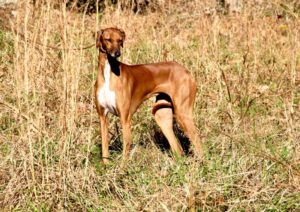
The Azawakh is known for its athleticism, intelligence, and independent nature. It is a sighthound native to the Sahel region of Africa.
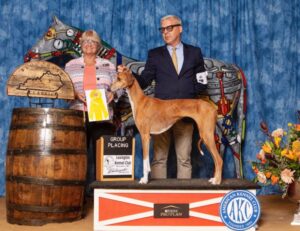
Interview with Breeder/Owner Handler Doug Koger. Doug shares her experience in the world of purebred dogs and dog events.
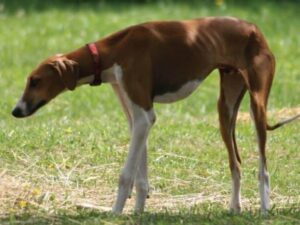
Azawakh dog breed information. Learn more about the breed’s origin and purpose, appearance, colors, behavior, care, health, nutrition & more.
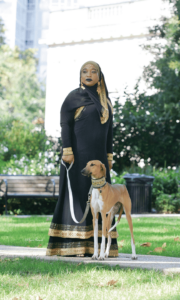
Azawakh Interview with Aliya Taylor, talking about her interests, introduction with Azawakh dog breed, dog show experience and more.

Dan Sayers is the Editor-in-Chief of SHOWSIGHT digital and print publications. He received a B.S. from Drexel University where he studied interior architectural design. His professional career has allowed him to develop his planning, problem-solving, and project management skills, which were employed in the office, educational, and financial sectors. While working as a project manager, he earned a Graphic Design Certificate from the University of the Arts and began creating ads for many of America’s top-winning show dogs. Through this work, Dan became Editor-in-Chief of the nation’s first online-only dog show publication. His current role expands on this experience and broadly extends to cover the sport of dogs in Companion and Performance events as well as all aspects of Conformation.
Dan is a long-time member of the Irish Water Spaniel Club of America and is the organization’s current AKC Delegate and Archivist/Historian, as well as a club-approved Breed Mentor. From 2000-2010, he was the club’s AKC Gazette Columnist. He breeds Irish Water Spaniels under the Quiet Storm prefix and has judged the IWSCA National Specialty Sweepstakes twice. Dan is a member of the Morris and Essex Kennel Club as well as the Dog Writers Association of America, which recognized his illustrations in the award-winning canine compendium, the Encyclopedia of K-9 Terminology.
The best way to ensure a long and happy relationship with a purebred dog is to purchase one from a responsible breeder. Not sure where to begin?
Contact the National Parent Club’s Breeder Referral Program, which is listed on the AKC Breeder Referral Contacts page.
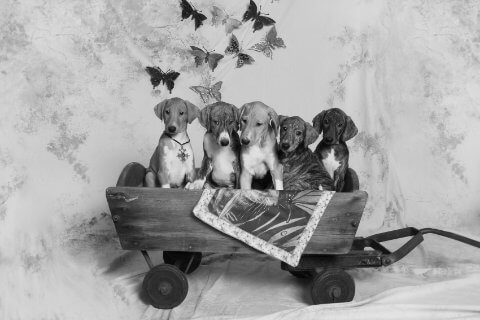
"*" indicates required fields
Showsight Magazine–the world’s most influential purebred dog publication since 1992. Each issue reaches a global audience dedicated to preserving the history and health of purpose bred dogs. Filled with award-winning editorial focused on news and insights from the dog show community, top breeders, handlers, AKC Judges, and more!